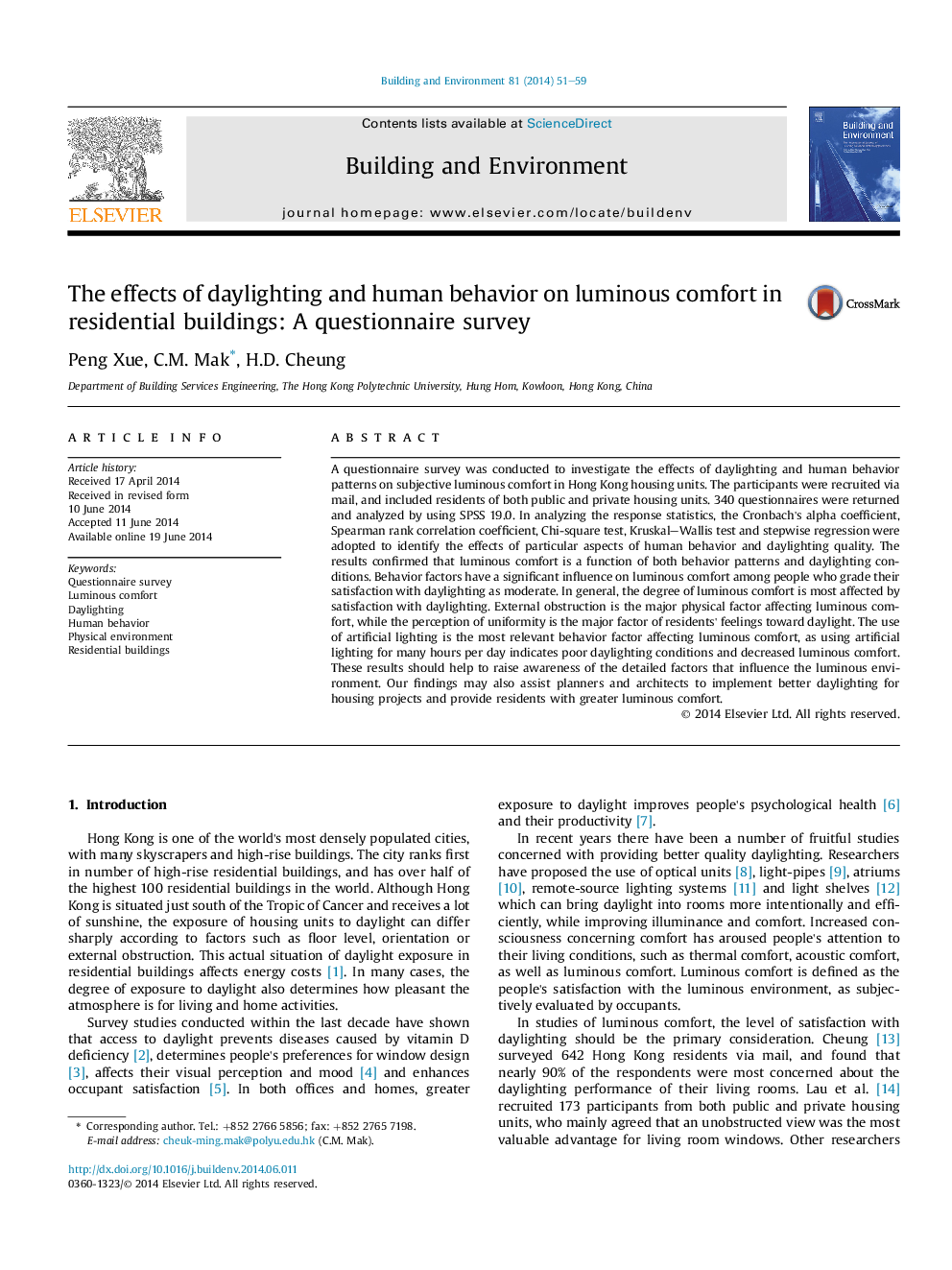| Article ID | Journal | Published Year | Pages | File Type |
|---|---|---|---|---|
| 6700175 | Building and Environment | 2014 | 9 Pages |
Abstract
A questionnaire survey was conducted to investigate the effects of daylighting and human behavior patterns on subjective luminous comfort in Hong Kong housing units. The participants were recruited via mail, and included residents of both public and private housing units. 340 questionnaires were returned and analyzed by using SPSS 19.0. In analyzing the response statistics, the Cronbach's alpha coefficient, Spearman rank correlation coefficient, Chi-square test, Kruskal-Wallis test and stepwise regression were adopted to identify the effects of particular aspects of human behavior and daylighting quality. The results confirmed that luminous comfort is a function of both behavior patterns and daylighting conditions. Behavior factors have a significant influence on luminous comfort among people who grade their satisfaction with daylighting as moderate. In general, the degree of luminous comfort is most affected by satisfaction with daylighting. External obstruction is the major physical factor affecting luminous comfort, while the perception of uniformity is the major factor of residents' feelings toward daylight. The use of artificial lighting is the most relevant behavior factor affecting luminous comfort, as using artificial lighting for many hours per day indicates poor daylighting conditions and decreased luminous comfort. These results should help to raise awareness of the detailed factors that influence the luminous environment. Our findings may also assist planners and architects to implement better daylighting for housing projects and provide residents with greater luminous comfort.
Related Topics
Physical Sciences and Engineering
Energy
Renewable Energy, Sustainability and the Environment
Authors
Peng Xue, C.M. Mak, H.D. Cheung,
